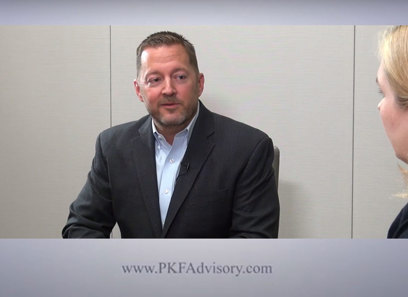M&A Outlook: Key Trends Shaping the Future of Mergers and Acquisitions
M&A Outlook: Key Trends Shaping the Future of Mergers and Acquisitions
Blog Article
Exploring the Lawful and Economic Facets of Mergers and Acquisitions Purchases

Introduction of Mergers and Acquisitions
Mergers and purchases (M&A) stand for a substantial sector of company strategy, with plenty of purchases taking place globally each year. These tactical maneuvers are mainly targeted at enhancing competitive advantage, increasing market share, and attaining functional harmonies. M&A tasks normally come under two distinct groups: mergings, where 2 business integrate to form a new entity, and procurements, where one firm acquisitions one more, therefore maintaining its identity.
The inspirations behind M&A transactions are differed. Companies may pursue these approaches to expand their item offerings, go into brand-new markets, or take advantage of technological advancements (Economic factors influencing M&A). Additionally, M&A can function as a way to remove competitors or access to valuable copyright
The process of M&An includes a number of phases, consisting of target recognition, combination, appraisal, and settlement. Successful deals need extensive due diligence to evaluate monetary health and wellness, operational capacities, and prospective responsibilities of the target firm.
Lawful Framework and Conformity
Comprehending the legal framework and conformity needs bordering procurements and mergings is crucial for browsing the complexities of these transactions - Economic factors influencing M&A. These procedures are controlled by a myriad of regulations at both government and state levels, which aim to make certain reasonable competition, safeguard stakeholders, and copyright company administration standards
Key governing bodies, such as the Federal Trade Commission (FTC) and the Stocks and Exchange Compensation (SEC), enforce antitrust regulations and safeties policies, specifically. Business should conduct detailed due diligence to identify any type of potential lawful challenges, consisting of anti-competitive worries or regulatory authorizations essential for an effective transaction.
Additionally, compliance with disclosure commitments is crucial, specifically when public business are entailed. This includes declaring required paperwork and providing precise details to shareholders and governing authorities.
Cross-border M&A transactions present added layers of complexity, as varying lawful standards and regulative structures should be browsed. Engaging legal advice with competence in mergings and acquisitions is essential to ensure adherence to suitable regulations and to mitigate dangers. Hence, recognizing these legal frameworks not only assists in conformity yet also enhances the possibility of a effective and reliable merging or acquisition.
Financial Appraisal Methods

Among one of the most common methods are the Discounted Money Circulation (DCF) analysis, which estimates the here and now worth of expected future capital, and the Comparable Company Evaluation (CCA), which reviews a company's value loved one to comparable firms within the same market (Economic factors influencing M&A). In Addition, Precedent Transactions Analysis (PTA) takes a look at historic acquisition data to establish criteria for evaluation
An additional significant method is the Asset-Based Assessment, which concentrates on the firm's internet asset value, providing a concrete evaluation of worth by taking into consideration both existing and lasting liabilities and assets. Each technique has its limitations and strengths, typically varying in applicability relying on the nature of the organization and the sector context.
Inevitably, using a mix of these monetary appraisal methods can yield a comprehensive understanding of a company's worth, aiding to make sure that both purchasers and sellers take part in equitable and reasonable deals during the elaborate procedure of mergings and purchases.
Due Diligence Refine
Performing complete due diligence is necessary to uncovering critical details regarding a target company before settling a merger or acquisition. This procedure involves a comprehensive testimonial of the target's monetary, functional, lawful, and regulatory facets. The main aim is to recognize potential threats and obligations that may influence the transaction's worth or post-merger efficiency.

In addition, social due diligence evaluates the compatibility of the merging entities' business cultures, which is essential for an effective assimilation. The due persistance procedure calls for partnership among different stakeholders, consisting of lawful counsel, economic consultants, and sector experts, to ensure a holistic understanding of the target firm.
Eventually, the findings from due diligence educate negotiation techniques and may lead to adjustments in the acquisition rate or terms, therefore protecting the rate of interests of the obtaining event and preparing for an effective merging or procurement.
Post-Merger Combination Challenges
While successful mergings and acquisitions commonly generate considerable synergies and development possibilities, the post-merger integration phase offers a myriad of obstacles that can weaken these advantages. One of the primary issues is the cultural assimilation of the merging entities.
An additional substantial difficulty lies in aligning systems and procedures. The integration of disparate IT systems, functional techniques, and economic coverage can be lengthy and intricate, typically bring about functional disturbances. Additionally, the failing to interact effectively during this stage can cause complication and misinformation among clients, stakeholders, and employees.
Financial assimilation also presents challenges, especially in resolving financial policies and bookkeeping practices. This misalignment can result in inconsistencies in financial reporting, impacting stakeholder self-confidence and market assumption.
Lastly, regulatory compliance concerns might occur, requiring precise interest to legal needs. Dealing with these difficulties quickly and purposefully is important for recognizing the awaited advantages of a merging or procurement, ensuring long-term success and stability.
Conclusion
To conclude, the detailed landscape of purchases and mergers requires a thorough understanding of both lawful and economic facets. Adherence to regulative structures guarantees compliance and reduces anti-competitive threats, while robust monetary assessment strategies offer important understandings right into firm worth. A detailed due diligence process is necessary for recognizing prospective challenges, inevitably leading to extra effective post-merger combination. Effective navigating of these components significantly enhances the likelihood of attaining desired end results in M&A deals.
The complex landscape of acquisitions and mergers deals requires an extensive understanding of both legal frameworks and monetary evaluation methodologies. Regulative bodies, such as the FTC and SEC, impose rigorous conformity requirements to safeguard versus anti-competitive habits, while robust monetary analysis methods are Economic factors influencing M&A vital for properly analyzing a firm's worth. Effective transactions require thorough due persistance to evaluate economic health and wellness, functional abilities, and prospective obligations of the target company.Financial due persistance analyzes historical and projected economic declarations, cash flow analysis, and tax obligation conformity. Adherence to governing structures makes certain compliance and alleviates anti-competitive threats, while robust economic assessment strategies provide essential insights into firm well worth.
Report this page